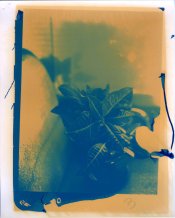Bob Carnie
Subscriber
Thank you for posting Mr Berger, I have sent you an email ,, but for all APUGers that are following this thread..
CMB is a legend and I am so happy that he is on this thread, thrilled in fact.
I look forward to the manual and like Dave C will follow this .
Sandy King is in the room outside right now teaching 10 people how to make carbon tissue and prints in my working darkroom . lets just say the advent of neg making has made this process practical for us all.
I have spent some time in Maine 1 week in the early 90's using this product and John Bentley is in Toronto and I have watched his progress , from the time he was staying with me, to him buying his bus , to going to Mexico and his meeting Todd Gangler.
I plan to follow this with interest as any serious printer would.
CMB is a legend and I am so happy that he is on this thread, thrilled in fact.
I look forward to the manual and like Dave C will follow this .
Sandy King is in the room outside right now teaching 10 people how to make carbon tissue and prints in my working darkroom . lets just say the advent of neg making has made this process practical for us all.
I have spent some time in Maine 1 week in the early 90's using this product and John Bentley is in Toronto and I have watched his progress , from the time he was staying with me, to him buying his bus , to going to Mexico and his meeting Todd Gangler.
I plan to follow this with interest as any serious printer would.


 , but I think you are giving them to much credit... It is well known that at least some of the organic, but also some of the inorganic, pigments used in the heydays of Dutch painting (16-17th century), were fugitive and could fade rather easily. For pigments used by 19th century painters, a time when many new and untested pigments came available, the situation was even worse. Some of the famous Van Gogh paintings, and the colors therein, are rapidly "fading" to ugly greys and browns, due to use of at the time "novel" pigments...
, but I think you are giving them to much credit... It is well known that at least some of the organic, but also some of the inorganic, pigments used in the heydays of Dutch painting (16-17th century), were fugitive and could fade rather easily. For pigments used by 19th century painters, a time when many new and untested pigments came available, the situation was even worse. Some of the famous Van Gogh paintings, and the colors therein, are rapidly "fading" to ugly greys and browns, due to use of at the time "novel" pigments...  :
: I admit that my statement about Vermeer was backed by absolutely zero research... just seemed like a convenient example of an old artist with vivid colors.
I admit that my statement about Vermeer was backed by absolutely zero research... just seemed like a convenient example of an old artist with vivid colors. 
